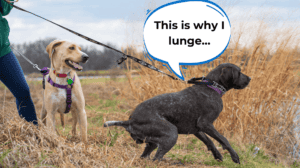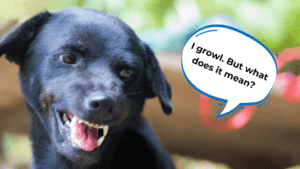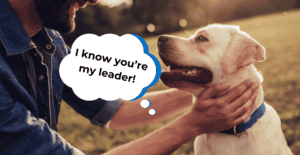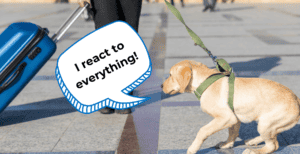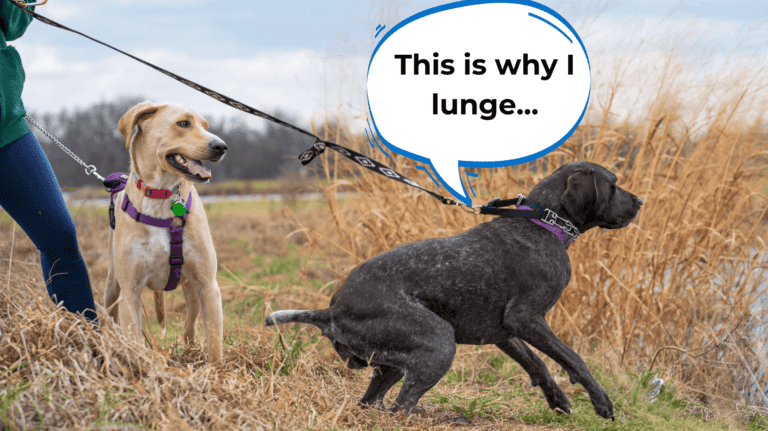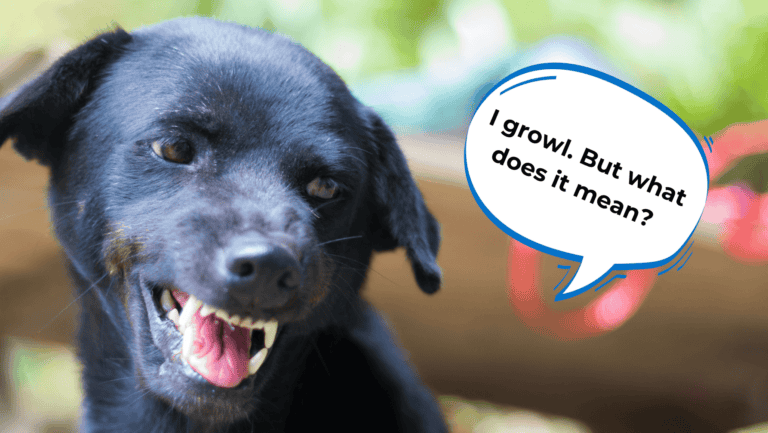Today’s Guest
Jennifer Cattet Ph.D. CPDT-KA:
I’m so excited to introduce to you today’s guest, Jennifer Cattet, the founder of Medical Mutts, a nonprofit organization that is dedicated to the training of high quality diabetes alert dogs, seizure dogs and psychiatric service dogs, while providing a new lease of life to shelter dogs.
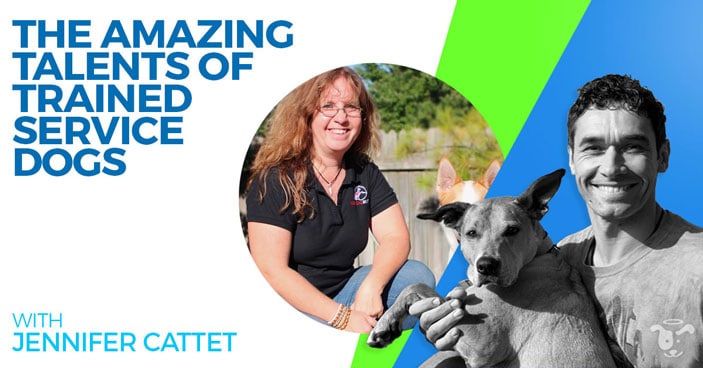
Jennifer is a wonderful person to chat with regarding service animals because she has an incredible amount of education around the topic. In fact, she has a PhD in Ethology from the University of Geneva in Switzerland where she studied dog behavior and has worked with dogs for over 35 years now.
Today Jennifer and her husband have a dual mission…to rehabilitate shelter dogs and to make it possible for anyone who is in need of a service animal to get the training, instruction and resources they need.
Of course, during our time together, Jennifer also sheds light on the amazing abilities dogs have to aid humans with health related issues and provides an incredible amount of information regarding why it’s so important to help people in need of service dogs get the resources they need to thrive.
Jennifer’s mission is a win-win for both dogs and humans alike.
If you’re curious about service dogs, what types of jobs they can perform, and how they are trained, this is a podcast you don’t want to miss!
You’ll Hear About
- [01:00] Who is Jennifer Cattet and What’s Medical Mutts All About
- [02:30] The Difference Between Service and Therapy Dogs
- [03:30] What Services Can Dogs Provide?
- [04:00] How Dogs Detect Conditions with Smell
- [11:00] The Science of Smell
- [12:00] Amazing Baby Bath Tub Story
- [21:30] Psychiatric Therapy Dogs
- [24:30] Can Dogs Count?
- [27:00] Requirements for a Good Service Dog
- [30:00] Attributes of a Great Service Dog
- [36:00] Do Service Dogs Have to Be Perfect?
- [39:30] Are You Cut Out to Be a Service Dog Trainer?
- [42:00] Get Connected with Medical Mutts
How You Can Get Involved
Help Medical Mutts by donating, sponsoring a dog or volunteering.
Interested in training your own service dog? Medical Mutts offers online LIVE classes that you can join, no matter where you live in the world!
Links & Resources
- Website: https://medicalmutts.org/
- Facebook: https://www.facebook.com/MedicalMutts
- Twitter: https://twitter.com/jennifercattet
- YouTube: https://www.youtube.com/channel/UCoPj_4-SIHs2FN1_iJ0vBiw/videos
- Train Your Own Service Dog: https://medicalmutts.org/train-your-own-service-dog/
Chai the Diabetic Alert Dog
Learn more by tuning into the podcast!
Thanks for listening—and again, don’t forget to subscribe to the show on iTunes / Spotify to get automatic updates.
Cheers,

~Doggy Dan
|
Jennifer Cattet: (00:01) |
There's one story that I love to tell because, to me, it's one of the reasons why I do this. One of the groups I was working with in France placed a seizure alert dog with a woman, with a young mother, and she was bathing her baby in the tub. She was all by herself with her dog and her baby, and all of a sudden the dog came rushing into the bathroom and started poking her and she's like, "This isn't possible." But just out of doubt she pulled her baby out of the tub, put the baby on the floor and immediately went into a full blown seizure. |
|
Doggy Dan: (00:35) |
Oh, my gosh. And if she hadn't gotten the baby out, the baby would have drowned in the bath. |
|
Jennifer Cattet: (00:41) |
Yeah. Yeah. |
|
Voiceover: (00:49) |
Welcome to the Doggy Dan Podcast Show, helping you unleash the greatness within your dog. |
|
Doggy Dan: (00:59) |
Hello and welcome everybody to another Doggy Dan podcast and today as always I'm super excited and I know I say it every time, but it's true. I love chatting to dog people and today is no exception. We have Jennifer Cattet with us and she is from Medical Mutts. Now Medical Mutts was founded by Jennifer and her husband Jack Topham in 2013, and they're nonprofit organization is dedicated to the training of high quality diabetes alert dogs, seizure dogs and psychiatric service dogs, while providing a new lease of life to shelter dogs. She has a team of highly qualified and certified trainers and Medical Mutts offers different levels of services depending on each person's needs. From fully trained service dogs to training owner dogs as service dogs, or teaching owners how to train their own dogs. Sounds fascinating. I'm really excited I want to learn about this stuff, so Jennifer over to you. Welcome. Tell us a little bit about who you are and tell us about Medical Mutts. |
|
Jennifer Cattet: (02:05) |
Well thank you Dan for having me, and always appreciate the opportunity to talk to other dog lovers. |
|
Doggy Dan: (02:14) |
For sure. |
|
Jennifer Cattet: (02:14) |
So yeah, Medical Mutts, we're in Indiana, but we do help people all of the U.S. and all over the world sometimes, because we do have classes online- |
|
Doggy Dan: (02:24) |
Cool. |
|
Jennifer Cattet: (02:24) |
... as well, but it's all about service dogs. We do service dogs only. |
|
Doggy Dan: (02:28) |
So for those people listening who we have listeners outside of America, and I know a lot of people are interested in service dogs and therapy dogs, what's the difference and is there a difference? I kind of know the answer, but I'm asking for everybody. Service dogs and therapy dogs, what's the difference? I think I know. I think I do. |
|
Jennifer Cattet: (02:48) |
Yeah, so I would hope so, but a lot of people are confused and one of the reason is when you hear the word therapy dog you think of a dog that's going to provide you some therapy, so naturally that often goes along with people having anxieties or psychiatric conditions. But really a therapy dog, the short story of what they are is they provide the service to other people, not to the person holding the leash. It's other people, so people in hospital beds. |
|
Doggy Dan: (03:20) |
So the key word really is therapy, think of others. Service, think of you. |
|
Jennifer Cattet: (03:25) |
Yes, exactly. That's it. |
|
Doggy Dan: (03:29) |
So go into a little bit more if you could, if you'd be so kind. Service dog, what sort of services? I know we've touched on it already, but you've ... I mean, I've gone through your website and I've read a bit and you seem to offer a vast array of services and I've always been fascinated in this stuff and how dogs actually do what they do. So can you tell us what the dogs actually do? I just find it fascinating. |
|
Jennifer Cattet: (03:53) |
Sure. So we are specialized in dogs that can detect for conditions and alert for conditions like diabetes, seizures and psychiatric conditions. And the reason why we're specialized in those is because I've been part of research in all those fields and we were able to demonstrate that dogs can smell when somebody goes into hypoglycemia or somebody is about to have a seizure or a panic attack. Now the panic attack we haven't demonstrated yet, we haven't proven scientifically, we're working on it. But the other two, we know for sure that there is a smell and even though we haven't proven it we know for sure there's a smell also associated to our emotions. So if we have a high emotion we're going to release a smell and the dogs can be trained to use that as a cue to perform a behavior that might help us calm down and deal with the situation in a better way. |
|
Doggy Dan: (04:54) |
Okay guys, you might not have realized this but what Jennifer is saying here, this has got me ... This is why I get excited, because what you're saying is dogs ... You're the person who knows that dogs really can smell fear. |
|
Jennifer Cattet: (05:09) |
Oh yes, absolutely they can. You should see our fridge. So we have samples from people who send us ... we ask them to collect samples when they're having an emotion. So we have samples in our fridge that says panic, anxiety, fear. And we absolutely know that dogs can do that. |
|
Doggy Dan: (05:30) |
So what are the samples of? I'm picturing you've got people in your fridge. |
|
Jennifer Cattet: (05:38) |
Well, no, no, no, it's much easier than that. So what I like to do is think about what we call VOCs, the molecules that come out of our body, what are the most likely molecules that are going to reach our dogs nose, and those come out of our mouths when we breathe, from our breath, and from our pores. So the short story is all we ask is from somebody to grab a cotton ball, wipe it on their skin and put it in a zip lock bag, breathe into it and so it mixed whatever's on their skin and their breath and then close the zip lock bag and send that over to us. |
|
Doggy Dan: (06:20) |
Wow. I'm just blown away. It's like you always want to find the person who really knows, can dogs really ... I mean, I always ... I know they can. I know they can detect something. But it feels like you've got a bit of scientific background, is that right? Or you just- |
|
Jennifer Cattet: (06:35) |
I do, a little bit. I have a PhD in Ethology, so I have a scientific background from the University of Geneva in Switzerland where I studied dog behavior, so I've been in dogs for over 35 years now. And I love to back up what we do in training with some research so that we're not just saying that dogs can do it. We have to prove it to, to put some legitimacy behind it. But also for other people so that other trainers might also pick up on it and can reproduce what we're doing and help more people. |
|
Doggy Dan: (07:10) |
... Yes. Yes. Oh, it's just so exciting to be chatting to you. So would you be so good as to go through, so the diabetes, the diabetes as I understand it, I'm just curious about how the dogs ... What are the dogs detecting there? So with diabetes, that's a sugar insulin spike or dropping, is that right? And what are the dogs ... Would you be so good as to go through what are they picking up on there? |
|
Jennifer Cattet: (07:35) |
Yes. So if you have diabetes that's means your pancreas is not working. And so your body can't naturally regulates glucose which is a critical function that keeps us alive. So people with diabetes have to constantly check their glucose levels to make sure that they're relatively within range. And what we know is we can train dogs to alert the person to smell ... to smell, to detect a smell that is released when the person's glucose levels are dropping, so they're going into hypoglycemia or when they're raising above normal levels. So what's neat about that is we know there's technology, there's a lot of technology for people with diabetes that helps them tremendously, but there's plenty of times when that technology fails and doesn't help, doesn't maybe wake up the person if they're having a hypoglycemic episode at night or it's not necessarily ... Let me pick an example here. Let's imagine you're a 14-year-old boy in front of you what Xbox. I'm not into video games. |
|
Doggy Dan: (08:54) |
Yeah, sounds good to me. |
|
Jennifer Cattet: (08:77) |
But you're involved in a video game and your technology is telling you, hey, beep, beep, beep, beep. You need to check out your glucose levels. It's very easy for that 14-year-old boy to just turn it off and think, "Oh well, I'm going to address that in ... Let me finish my game and then I'm going to go take care of my glucose levels." And time goes on and bad things happen. Well with a dog, the dog will come over and start pestering that 14-year-old. We teach our dogs to give very strong nose pokes so it's not pleasant. It's meant to be irritating and for the dog to sustain it until they get a reaction. So it's a lot harder to ignore the dog than to ignore the technology. |
|
Doggy Dan: (09:43) |
So the bit I'm fascinated with is it's all to do with smell. And the two things I'm picking is one, we are probably giving off more smells and scents than we realize as humans. And secondly, the dog's just picking them up no problem and can decipher which smell it is and what it means basically, is that right? |
|
Jennifer Cattet: (10:02) |
That's right. And right now we don't know what that smell is. All we know is that there is a smell. |
|
Doggy Dan: (10:08) |
Okay, got it. |
|
Jennifer Cattet: (10:10) |
But what is in that smell is fascinating the medical industry right now, because if you can figure out what that smell is, what those molecules are, then you can come up with better ways to maybe detect the changes. So that's still happening. |
|
Doggy Dan: (10:27) |
So, I mean, as so often happens I should say, the dogs are doing stuff and we can't believe they're doing it almost because we don't understand how they're doing it. They're doing stuff we don't really understand is what I often sort of say. |
|
Jennifer Cattet: (10:39) |
That's exactly right and what's fascinating about working in this field is we have no idea when those smells come out or not, so we're always relying on our dogs to tell us if something is happening. So we have to stay really humble in this area- |
|
Doggy Dan: (10:56) |
Beautiful. |
|
Jennifer Cattet: (10:56) |
... because they are aware of so many things that don't even exist to us. |
|
Doggy Dan: (11:01) |
Yeah, oh beautiful. Beautiful. So that's diabetes, got it. Now would you be so good as just to touch on you mentioned seizures as well? I'm curious is that a similar sort of thing, is it a smell that's released when- |
|
Jennifer Cattet: (11:14) |
Yes. So we know that there's a smell. So we proved, we collected scents from ... this was done with a hospital in France, the collected smells from patients seizures and sent them over to our facility and we were able to demonstrate that dogs can pick up a smell of somebody with a seizure. So the way we prove it is we get samples from let's say Sara when she's in the seizure and when she's outside of the seizure. And the dogs can make the difference between those two samples from the same person. So that's how we know how there's definitely a smell. And in seizures it's extremely important because seizures, I mean, having seizures is really debilitating. Some people can't go to work, people can't cook because if you're cooking and you go into a seizure you can burn down the house. So we train the dogs to detect that smell so that they can alert the person before they have a seizure and that gives some time to the person to sit down or lay down and get into a safe space. |
|
Doggy Dan: (12:20) |
... Wow. |
|
Jennifer Cattet: (12:21) |
So there's one story that I love to tell because it's just, to me it's one of the reasons why I do this. One of the groups I was working with in France placed a seizure alert dog with a woman, with a young mother, and she was bathing her baby in the tub, she was all by herself with her dog and her baby, and was doing what all mothers do. And all of a sudden the dog came rushing into the bathroom and started poking her and she's like, "This isn't possible." But just out of doubt she pulled her baby out of the tub, put the baby on the floor and immediately went into a full blown seizure. |
|
Doggy Dan: (13:03) |
Oh by gosh. And if she hadn't got the baby out the baby would have drowned in the bath. |
|
Jennifer Cattet: (13:09) |
Yeah. Yeah. |
|
Doggy Dan: (13:12) |
Unbelievable. I wonder how far away the dogs can detect that scent from. The smell. Do you have any ideas? Is it really strong to them do you think? |
|
Jennifer Cattet: (13:21) |
So there's so many factors that influence that. We had one case of a child who was in the Mediterranean Sea swimming away, parents were on the beach with the dog and he was maybe 50 feet away in the water.- |
|
Doggy Dan: (13:38) |
No way. |
|
Jennifer Cattet: (13:39) |
... And suddenly the dog just jumped up and started poking the parents. |
|
Doggy Dan: (13:42) |
Oh my gosh. |
|
Jennifer Cattet: (13:43) |
And so they called their child in and were able to see that she was about to go into hypoglycemic, having a hypoglycemic episode. So why it worked there is because the wind was carrying the molecules to the dog. If the wind had gone the other way that would not have happened. |
|
Doggy Dan: (14:03) |
Unbelievable. I bet that doggy was well fed that night. |
|
Jennifer Cattet: (14:08) |
For sure. |
|
Doggy Dan: (14:11) |
Good boy, what do you want for dinner. In fact what do you always want. Whatever you want. |
|
Jennifer Cattet: (14:18) |
Yes. |
|
Doggy Dan: (14:19) |
I've seen that before with my dog. I had a beautiful dog named Peanut, and we would walk along the beach and then she would just stop and she would look out to sea and her nose would just be going. And it was just, wow, I wonder what she can pick up on. It may have been a dead fish. But it often felt like more than just a dead fish. It felt like there was a ... I want to say a large animal or something very specific, or it may not have been a large animal. She was just fascinated. Only happened maybe five times in her life in 13 years. But she just was literally obsessed with ... and there was nothing there. There was just water as far as I could see. Just ocean. And we walked every day, but sometimes it was like, "Do you realize what is out there?" And I had no idea of course. Never did. No idea. |
|
Jennifer Cattet: (15:15) |
No, that's right. That's what's so fascinating about this is really they get a lot of information from the environment that we don't even know exists. |
|
Doggy Dan: (15:26) |
Well, I have to say we have all these senses. The five senses. Seeing and hearing and tasting and smell. But a lot of us, we've, I mean, not so much with COVID, people who've lost the sense of smell have realized how important it is. But we don't use it nearly as much as the dogs. I mean, the dogs it's just so powerful for them. I sometimes feel like the dog's almost ... The dogs who can't see, but can smell still seem to function incredibly well. They may be blind, but if they can still smell they seem to be able to move around the houses and- |
|
Jennifer Cattet: (16:06) |
Yes, I think they compensate quite well. But I want to say this though, although we have to give them a ton of credit for their sense of smell and absolutely we're not even close to understanding how they experience the world, but their vision, see vision is still what's going to be used primarily over smell. And the reason for that is it's just less costly. If you look at it from a purely adaptive perspective, when you look at a room you get immediate information that is very easy and cheap to process with a ton of information about where things are placed. You immediately can determine where to go in a room or in a field. So with dogs, there's an immediacy that vision gives us that scent- |
|
Doggy Dan: (17:06) |
... Very quick snapshot I'm getting. Is that- |
|
Jennifer Cattet: (17:08) |
... Exactly. |
|
Doggy Dan: (17:08) |
... Yep. |
|
Jennifer Cattet: (17:10) |
That's right. Where scent requires a little bit of analysis. |
|
Doggy Dan: (17:13) |
Yes. Got it. |
|
Jennifer Cattet: (17:14) |
So they will rely on vision first, however, if the vision ... they can quickly switch over to scent if they need more information or if a scent will hit them. |
|
Doggy Dan: (17:25) |
Brilliant. I love it. I love it. That's been so powerful. I'm picturing, the dog comes in a room. It does a quick snapshot, looks around, goes over to a corner. It turns the nose on and goes, "Where is this little biscuit?" I'm picturing my dog yesterday, actually. I dropped a biscuit out somewhere in a ... It was a bag of ... my daughter plays soccer. We have 12 soccer balls in a soccer bag. One of those big net bags. My dog walks in the garage, walked over to the soccer bag, and then he turned his nose on. He could have closed his eyes. And he was in the bag and he found this one little biscuit right at the bottom. It's hilarious. |
|
Jennifer Cattet: (17:77) |
Yeah. Yeah. Yep. |
|
Doggy Dan: (18:00) |
So the last one you talked about, there's diabetes, there're seizures, is there another way that dogs kind of ... Is it all to do with smell even the ... you talked about psychiatric- |
|
Jennifer Cattet: (18:09) |
Psychiatric, yes. So we use the same type of samples as for diabetes or seizures to help people who suffer with anxiety, panic attacks and disorders like that. So the idea here is to have a dog that can let the person know that their anxiety levels are rising. And it's not that the person doesn't know, but we're not always fully aware. We're in a situation, we're focused on what's happening. And sometimes, we don't realize that our anxiety is reaching levels that can tip us over into a bad place if we suffer from a psychiatric condition. So the dogs can smell that our anxiety is rising, and they'll come over and start pestering us again and poking us. |
|
Jennifer Cattet: (19:01) |
And what that does is it redirects our attention, our focus onto the dog and we can start petting the dog or the dog can do certain behaviors that will help us calm down. So the dog might get on our lap to provide deep pressure therapy for instance. So the weight of the dog, the heat, the warmth, the physical contact with the dog is going to help us secrete oxytocin and just overall help us calm down and refocus on the dog versus on what was triggering the anxiety. |
|
Doggy Dan: (19:38) |
Wow. Brilliant. I realize I actually had a service dog and I didn't even realize it. I must share this story because it's quite funny. So I had a lovely dog called Inca, who's passed away now and she was a real cuddle bunny, used to sit by my feet when I was in the office. And I used to do podcasts ... No, I used to do a lot of video work and recording stuff, and what would happen was I used to get a bit stressed as you do sometimes doing these things, especially when a fly, or sometimes a fly would fly in the window, because I didn't have air conditioning at the time. So the windows were open, I'm trying to record and a fly would come in and fly around the room. I'd get so annoyed trying to catch a fly, because you just couldn't record with those zzz, zzz. |
|
Jennifer Cattet: (20:24) |
I can see that, yes. |
|
Doggy Dan: (20:29) |
You have to edit and stop the recording. Well I didn't realize how stressed I was getting until I noticed my little dog, if I started doing the ... I'd just pat. Just a ... that's all I'd say. I'd just go nah. And I noticed she would slowly get up and quietly leave the room. And what started happening is I'd be sat there and I'd notice she'd go up to the door and starts pawing at the door saying, "Can you let me out?" And I'd go, "Well, why do you want to get out?" And then I'd realize I was stressed. There was a fly in the room. And just being aware sometimes is enough to go, "Oh yeah, I am. I'm getting really stressed about just a fly." And so it really helped me because I was able to manage my own stress and just realize I can chase the fly out the room without getting stressed. And yeah, it was super helpful. |
|
Jennifer Cattet: (21:16) |
Yeah. It is. And it's great feedback too on how you're impacting the others in the room. Because the dogs are going to give us immediate feedback. Their behavior is going to change based on how we feel. Lets us know well, maybe I'm coming off a little too strong here or I need to do something because I'm having an impact on the other creatures in this room, humans or dogs. |
|
Doggy Dan: (21:43) |
And it's much easier to take that feedback from your dog rather than from your wife. |
|
Jennifer Cattet: (21:48) |
Definitely. Definitely. |
|
Doggy Dan: (21:52) |
When your wife says, "Darling, you're getting stressed and anxious and you need to calm down," it's not going to be as ... What I'm trying to say in a silly way- |
|
Jennifer Cattet: (22:01) |
No. |
|
Doggy Dan: (22:01) |
... When my dog says, I know she's not being mean. I know she's coming from a loving place. I know she's being honest and I know she's probably 100% correct, which she was every time. So you go, "Okay, here's the feedback. Here's the accurate result. I am becoming stressed. Thank you." And so all of these dogs we've talked about. All of these things the dogs help with, diabetes, seizures, psychiatric anxiety, panic, they're all based on the dogs being able to smell. Is that true of everything? Is everything the dog's doing really based around- |
|
Jennifer Cattet: (22:34) |
No. |
|
Doggy Dan: (22:35) |
... Okay. Can you tell us- |
|
Jennifer Cattet: (22:37) |
So those are just some of our specialties, but in each one of those conditions there's a number of cues or behaviors that are also going to be asked for with a word or with a gesture. So the dog can go get help for instance. Or can get medication or could remind somebody of taking their pills. Or could help a person in all sorts of ... But in those cases the person is going to ask the dog to do it directly. |
|
Doggy Dan: (23:16) |
Look, I'm so fascinated in this whole topic and I think what it is is I've always been fascinated with how clever dogs really are and what's really going on. So my brain's jumping around a bit here, which I apologize for. But so when it comes to reminding people about pills, what happens there? Can the dogs count how many pills a person has had or- |
|
Jennifer Cattet: (23:34) |
No, no, no. |
|
Doggy Dan: (23:35) |
... No. |
|
Jennifer Cattet: (23:35) |
That would be wonderful, wouldn't it. I mean, I think we'd see an explosion of- |
|
Doggy Dan: (23:40) |
Well, I don't put anything past these dogs. They know. |
|
Jennifer Cattet: (23:45) |
... We'd see an explosion of dog nurses. But no, it's not as complex. What we do really is pair a sound, an alarm with the behavior. So the alarm becomes the cue for the dog to come and bother the person. |
|
Doggy Dan: (24:01) |
Gotcha. |
|
Jennifer Cattet: (24:01) |
But just like I said earlier, it's easy to just shut off an alarm, you just whack you alarm and turn it off. Where the dog is going to keep up and say, "Hey no, I need my treat now. So you need to move and go get your pills and give me my treat." |
|
Doggy Dan: (24:17) |
Oh yeah. Yep. Well, I kind of said it in a jokey way, can the dogs count how many pills you've had. The dogs can count to one. I can tell you they can count. They can count to one. If they've had no meals, they will tell you, I have had zero food. And they don't give up because- |
|
Jennifer Cattet: (24:33) |
They can count to more than that actually. When I did my dissertation, my PhD, I was trying to see if the dogs had a sense of how many treats were in a big field. So I was using a large soccer field. So this is in France, there were soccer fields everywhere. And hiding 10 treats. And I was leading the dogs to each one of the treats. So showing them where the treats were then letting the dogs loose and allowing them to go check out the treats. What fascinated me is so not only were they able to take shortcuts between the treats, so they were not using the tracks that we had used, so that was one of the things that I was looking at, but they were able to take shortcuts between the treats and they stopped immediately after the 10th treat. So they had a real sense of how many treats were on there. So the treats were completely invisible. |
|
Doggy Dan: (25:31) |
... Was there always 10 treats, or how did they know there were 10 treats? |
|
Jennifer Cattet: (25:35) |
There were always 10 treats, yes. |
|
Doggy Dan: (25:37) |
Wow. |
|
Jennifer Cattet: (25:40) |
And they were completely invisible, covered in grass, and everything. I had a map to find them. |
|
Doggy Dan: (25:45) |
So you're telling me the dogs always knew there's one, two ... Once they'd learned the game pretty much. You had to teach them there was 10 treats I guess. Is that how you told them there was 10 treats? |
|
Jennifer Cattet: (25:53) |
Yeah. |
|
Doggy Dan: (25:54) |
How did you tell them there was 10 treats? Is it just repetition, there's always 10? |
|
Jennifer Cattet: (25:77) |
It's just repetition. Just I lead them to each treat and then take them off the field and then record how they found those treats. But they could have searched for 10 minutes, but they didn't. It took them less than five minutes to get all the treats and they stopped immediately after the 10th treat. Sometimes after the eight or ninth, but they were close enough. And in the ballpark. |
|
Doggy Dan: (26:24) |
Yep. So they're definitely counting. Wow, that's brilliant. |
|
Jennifer Cattet: (26:27) |
Mm-hmm (affirmative). |
|
Doggy Dan: (26:27) |
Well, they're definitely doing something along those lines. Yeah. Wow. So I guess, I'd love to have you on again to chat to you about more stuff, but I'm trying to cover off as much as we can and I'm fascinated with the whole concept of dogs going around with people and traveling, because when I traveled through America I was blown away with how many dogs were on the airplanes. I don't think I was seeing things. There was dogs on airplanes, or at least in the airports, is that right? |
|
Jennifer Cattet: (26:77) |
That is right. That has changed a little bit because that's when ... There was a law in place that said if you had an emotional support dog or animal, actually, because there were people traveling with kangaroos and iguanas and all ... guinea pigs. So it- |
|
Doggy Dan: (27:15) |
Kangaroos on planes, that's- |
|
Jennifer Cattet: (27:17) |
... It became quite interesting. So they stopped that and now the laws only allow for service dogs, meaning dogs that have been trained specifically for disability and not just any support animal. So you won't see as many animals. |
|
Doggy Dan: (27:35) |
... Yeah, we all get a little bit stressed sat on an airplane. I mean, hey, we'd all feel better if we had a dog on our lap. |
|
Jennifer Cattet: (27:43) |
That's right. Maybe they should start passing out dogs on the airplane. |
|
Doggy Dan: (27:47) |
Yep. Yep. |
|
Jennifer Cattet: (27:49) |
The airlines’ dogs. |
|
Doggy Dan: (27:51) |
I have to ask this, is there a size limit? I mean can you have a great dane turn up as your service dog? It always just fascinates me. |
|
Jennifer Cattet: (27:59) |
Yeah, so size is a factor. Now there's no law that says you can't have a Great Dane. But there's a practical issue of having a service dog. If you're going to travel on a plane or even just go to a restaurant and your dog can't easily fit under the table, that's a bit of a problem. So ideal weight really is between 40 to 60 pounds. Those are the dogs that can go pretty much everywhere without any trouble. When you get larger than that, not only is it harder because they're not practical, but you also draw more attention and so you're going to get even more people ... Or even if you have dogs from very special breeds, you're going to have a lot more people coming and bother you all the time about your service dog. |
|
Doggy Dan: (28:43) |
And stress you out. |
|
Jennifer Cattet: (28:45) |
Stress you out. Exactly. If you have social anxieties, and you have people constantly asking you about your dog, that is not helpful anymore. |
|
Doggy Dan: (28:55) |
And so have you got any stories of dogs who ended up in interesting places? Or I guess, they go everywhere. |
|
Jennifer Cattet: (29:03) |
They go everywhere. But where they make a huge difference is in allowing a person to gain independence. One of the first diabetes alert dogs that I placed was with a young woman who was 17 at the time. And she came to us and said, "Look, I'm never going to be able to leave my parent's home. I'm looking at going into college nearby. I'm terrified of going to sleep at night, and I need a service dog because I'd like to travel the world and I can't right now." So she got a dog. We placed her with a husky that had come from a very difficult situation that we got in a humane society, and together since, they have been to Costa Rico, to Ireland. They've traveled all over the place. She went to the college of her choice. And so she with this dog, it really allowed her to spread her wings and live the life that she wanted to live. |
|
Doggy Dan: (30:05) |
Wow, it's amazing. Brilliant. |
|
Jennifer Cattet: (30:07) |
So yeah, we have pictures of her on the beach with her dog in Costa Rico and all sorts of very cool places. |
|
Doggy Dan: (30:14) |
So what are the key attributes of a great service dog? I know you've got a book, I think it's called “Selecting and Training Your Service Dog” and “How to Succeed In Public Access Work.” So in terms of people who are listening to this thinking, "Ooh, I think my dog's great. My dog could be a service dog." What are the key attributes that you'd say? |
|
Jennifer Cattet: (30:40) |
Yeah. And the book I wrote is actually, was not my first, I was actually writing another book about training dogs to alert to medical conditions. But then I realized that we need to start from the beginning and service dog training, the biggest part of training a service dog is training for public access. If you have a dog that can help you with all sorts of things, but you can't take it anywhere, that's a bit of a problem. |
|
Doggy Dan: (31:10) |
Because it's aggressive towards people. |
|
Jennifer Cattet: (31:13) |
Exactly. So that's why I ended up writing the other book first, with the understanding that we see a lot of people picking the wrong dogs or wanting things out of their current dog that are just not possible. |
|
Doggy Dan: (31:28) |
Okay. Tell us, what's the big no-nos? What's the wrong dog? What's the bad traits? What do you not want? I'm thinking too much high energy wouldn't be good, eh? |
|
Jennifer Cattet: (31:43) |
Energy would be hard, because if you're trying to watch a movie, you're in a movie theater or at a restaurant and your dog is like, "Hey, what are we doing?" And not wanting to settle down, that's a bit of a problem. But mostly see when you take a dog out in public, our goal is twofold. First we want to make sure the dog can work. So can focus on you. But we also don't want to cause problems to other people. We don't want to be in a situation where anybody can say that our dog has been a problem, because then it has an impact on the whole service dog community. |
|
Jennifer Cattet: (32:18) |
So we need dogs that are very safe to take out in public and that are capable of focusing on their person and not be worried about what's going on in the environment. So one of the biggest things that service dogs need to have is confidence. Confidence and adaptability. They have to be able to go in all sorts of places, around all sorts of people and be okay. |
|
Doggy Dan: (32:40) |
So it is almost what I was picturing was that kind of they don't have to look spectacular in any way, they just have to be the sort of solid, bomb-proof, confident, not reactive, not especially fearful, not especially dominant, not especially ... Jut calm and happy to go everywhere and- |
|
Jennifer Cattet: (33:00) |
Just easy going. |
|
Doggy Dan: (33:02) |
... Easy going. Yep. |
|
Jennifer Cattet: (33:02) |
Yes. That's it. Easy going, happy go lucky dogs. Yep. Social. |
|
Doggy Dan: (33:07) |
Ah, that was Peanut, you see. I always thought Peanut would be a great ... She was my therapy dog. She was my service dog. Beautiful. Wow. So for people who are listening to this and thinking, "What could I do? How could I get involved? I'd like to maybe getting or training a service dog." What are the things that people can do? How can they get involved and find out more? |
|
Jennifer Cattet: (33:36) |
Well, if they have a dog, or want to get a dog that they train as their service dog, they can certainly go to medicalmutts.org. There's a video about how to select the dogs, or buy the book to make sure that their dog qualifies. We test the dogs before we bring them into our program. And then we have online classes to teach people how to train their own service dog. |
|
Doggy Dan: (34:00) |
Do you hear that people? Online training courses on how to train your dog as a service dog. It's a beautiful website, Jennifer. I really, really liked working my way around it. |
|
Jennifer Cattet: (34:10) |
Oh, thank you. |
|
Doggy Dan: (34:12) |
So people can literally go on your website, which is medicalmutts.org and you have programs on there which people can join. |
|
Jennifer Cattet: (34:21) |
Yes. |
|
Doggy Dan: (34:22) |
And train their dogs from their own home by watching the videos. And they're pretty in depth from what I could tell. Is that right? |
|
Jennifer Cattet: (34:28) |
So they're not watching videos, they're live classes. So each class actually I'm teaching with another one of my trainers, and there is video support in between classes, but they're live classes where we answer questions- |
|
Doggy Dan: (34:43) |
Brilliant. |
|
Jennifer Cattet: (34:44) |
... we demonstrate the behaviors. We watch people live so that we can give them feedback. And then there are assessments along the way to make sure that all of the material is well understood and that the dog is at the level that we need to be to move on to the next section. Yeah, these are, they're not for everyone because it does require work. You can't just attend the class once a week and expect results. This will require ongoing work with your dog. |
|
Doggy Dan: (35:16) |
I have to ask, have you had some disasters? Do you have any stories of dogs where it went very wrong or do we not talk about those situations? |
|
Jennifer Cattet: (35:24) |
So it- |
|
Doggy Dan: (35:26) |
Is it not funny, I guess. Maybe, it's not funny, I'm just thinking. |
|
Jennifer Cattet: (35:29) |
... Well yes. You hit it on the nail there. It's- |
|
Doggy Dan: (35:32) |
People's misadventure. |
|
Jennifer Cattet: (35:35) |
... In best circumstances with dogs that are breed for this, with all the right conditions, about half don't make it through. |
|
Doggy Dan: (35:42) |
Wow. |
|
Jennifer Cattet: (35:42) |
You have to keep that in mind going through this, is that a lot of dogs just aren't cut out for it. Just like a lot of people can't be a fireman or surgeons or even accountants. It doesn't matter what job you want to get into, we can't all do the same thing. And it's the same with dogs. So you might end up with a dog that starts out great, but as you progress, you realize that your dog is terrified to go out and his tail is tucked under and he's starting to look at people funny and it's just not a good place. |
|
Doggy Dan: (36:15) |
Yep. Yeah. And there're other. Dogs who just are so good in 99% of situations, but there's one thing which will absolutely drive them crazy. And I guess that's where, yeah, they've really got to be- |
|
Jennifer Cattet: (36:27) |
Yeah. But you know, I think we also have to get away from the idea that service dogs are perfect. |
|
Doggy Dan: (36:34) |
... Yes. |
|
Jennifer Cattet: (36:35) |
Because they are not. They're dogs just like any other dog. They will occasionally take a shit in a mall or bark because they're startled. Or do things that is not service dog behavior. But they will. They're dogs. They don't even know they're service dogs. They're just trying to deal with the situation the best they can. So we're never going to achieve perfection, but we want to make sure that those situations are not typical and recurring all the time. We don't want a dog that's always having accidents whenever you take them out or that's barking at people when they look at him wrong or something like that. |
|
Doggy Dan: (37:17) |
Oh gosh, yeah. Yeah. I had a beautiful dog like I say, Peanut and she was a really piggy. Nothing I could do could stop her eating leftover scraps or food or stuff. If you weren't watching she would eat it. She was part Labrador and she loved her food. And I turned my back on her when I was at a garage once and I couldn't find her and she wouldn't come and I called. I said to the guys, "Is there anything out that she might eat?" And they said, "The grease from off the barbecue is all collected in a big bucket around the back." Sure enough she ate half a bucket of grease, like fat from a barbecue. And on the way home she threw up all over the dashboard of the car. |
|
Jennifer Cattet: (37:53) |
Oh boy. |
|
Doggy Dan: (37:54) |
Yep. She wasn't perfect. She was good, but wasn't perfect. And yeah, I can picture that. |
|
Jennifer Cattet: (37:59) |
Yeah. So what really, one thing about service dogs when they look really good, it's also a lot of credit to the trainer, the handler. |
|
Doggy Dan: (38:10) |
Yes. |
|
Jennifer Cattet: (38:10) |
It's a team. It's the person and their dog and it's how well the person knows their dog so that they can help them through all these situations and anticipate potential issues so that they can offset them and so they don't become issues. |
|
Doggy Dan: (38:24) |
So the best dog, the people who are good with service dogs, or very often are training service dogs are people who are good at often training dogs and are calm and patient, is that sort of the energy you are looking for with people, or what are the qualities you're looking for in a person? |
|
Jennifer Cattet: (38:42) |
That would be hard to find I would think, especially when we're working with psychiatric patients. Or I think mostly what it is, it's a willingness to learn and open mindedness. Because a lot of the stuff that we teach is not necessarily intuitive and training is a mechanical skill. So if you can memorize and if you have good body coordination, that makes it a whole lot easier because how you treat the dog, how you talk to the dog, how you move with your dog is going to either help the dog or make it harder for the dog to understand what you're trying to do. So those I would say are more of a concern, but they're hard to test too. So it's a- |
|
Doggy Dan: (39:34) |
Yes. Yes. People might come across very calm in one situation, but put them at home with their partner and kids and that could be a different kettle of fish. |
|
Jennifer Cattet: (39:45) |
... Absolutely. |
|
Doggy Dan: (39:46) |
Yeah. When I was talking about being calm, I was thinking about people who may want to train service dogs. That's where the people could be if they're- |
|
Jennifer Cattet: (39:54) |
Ah, yes. You're talking about the dog trainers. Yes, so for a dog trainer, a service dog trainer, I think the biggest quality is to really be a people person. |
|
Doggy Dan: (40:06) |
... Got you. Yes. |
|
Jennifer Cattet: (40:07) |
Because you are training dogs, but you will have to work very closely with people and you have to be the advocate of both the dog and the person. And it's important to have patience and understanding of the disabilities that they deal with and a real desire to make a difference. |
|
Doggy Dan: (40:25) |
Wow. At the end of the day, it's all about relationships with each other and other humans and other dogs, and dogs and your dog. And it's relationships and being tolerant and loving and kind and hmm. |
|
Jennifer Cattet: (40:36) |
Yeah. Exactly. Exactly. Yeah, that's why also our training methods are kind and ethical and reward based and as much as I want to help the people, I don't want to have a negative impact on the dog. I want the dog to see, to have a fulfilled and positive and wonderful life as a service dog. This is not meant to be a job that's difficult and stressful for the dog. Quite the opposite. It's a wonderful life for a service dog. |
|
Doggy Dan: (41:11) |
Yes. Yes. Beautiful. Yeah, I was going to finish almost on that question. How do the dogs feel about all this? But I guess a lot of these dogs get to see a lot more of the world and experience a lot more things because they are actually service dogs, which is wonderful. |
|
Jennifer Cattet: (41:25) |
Yeah, and you know the partnership and the bond between a service dog and their person is so strong and so special because they both rely on each other. So yeah, so the dog, they're not alone at home for eight hours a day. They're with a person. They have a rich and stimulating life and they're with somebody who understands dogs more than the average pet owner. |
|
Doggy Dan: (41:52) |
Wonderful. Jennifer, it has been fascinating, intriguing, exciting. I've had a lot of laughs. It's just been great chatting to you. So just a quick recap. For people who are thinking, I'm interested in this stuff, it's medicalmutts.org. Is that correct? |
|
Jennifer Cattet: (42:10) |
Yes, that's correct, medicalmutts.org. |
|
Doggy Dan: (42:13) |
Mutts, M-U-T-T-S, for those of you who can't spell mutts. And that's pretty much it. Is there anything else you'd like to add or say to people or ask me, or say to our listeners before we finish up here? |
|
Jennifer Cattet: (42:30) |
No, just want to say it's been an absolute pleasure chatting with you, Dan. I love to be able again to share experiences with other people and especially to reach people on the other side of the world too. |
|
Doggy Dan: (42:47) |
Yeah. Well I'd love to have another chat with you. I just feel like you've got so much knowledge and experience and you've seen dogs do stuff like that story of them running around the field and all that sort of scientific experiments and backing up how the dogs are actually doing what they do, is something that really fascinates me. So yeah, if you ever have an idea or when you're ready, get in touch and let's do it again. |
|
Jennifer Cattet: (43:09) |
Okay, with lots of pleasure. |
|
Doggy Dan: (43:14) |
Awesome. Okay everybody, that was a lot of fun. And thank you for listening. You've been listening to another addition of the Doggy Dan Podcast Show, whereas I say inside every dog is a good dog and inside every good dog is a great dog. Have a wonderful day and as always, take care and love your dog. Bye. |
|
Voiceover: (43:37) |
You've been listening to another episode of the Doggy Dan Podcast Show, bringing you one step closer to creating harmony with your dog |
Sign up to receive email updates
Enter your name and email address below and I'll send you periodic updates about the podcast.




